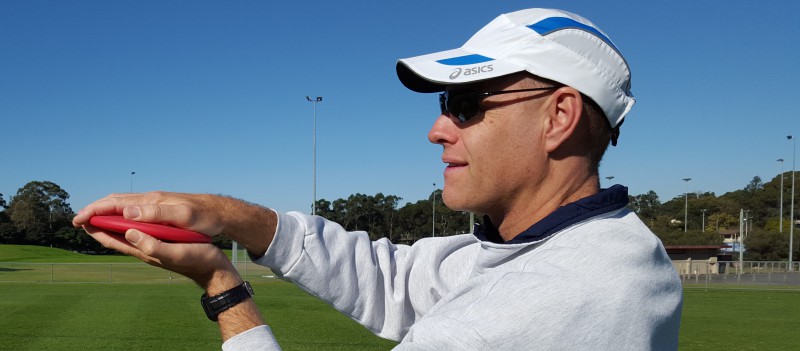Look Out for These Common Javelin Throwing Errors When Coaching Young Athletes
Below are 10 of the most common skill errors that I see kids make when they are throwing a javelin. I’d love for you to continue the list in the comments section of this blog.
1. A poor grip
Many young athletes grip the javelin incorrectly. Common grip errors seen in young athletes include:
- The javelin being held across the the palm, making it difficult to align the implement in the direction of the throw.

Javelin held across palm
- The javelin being held in the finger tips which means that it is very hard to control the implement.

Javelin held in finger tips
- The javelin being held too far down the grip. This means that fingers and thumb may slip on the grip during delivery.

No finger behind the binding
Teach young athletes that the javelin should be held at the back of the grip, along the palm, with fingers firmly around the implement, with at least one finger behind the binding. I prefer teaching the grip that sees one finger and the thumb behind the binding.

The “One Finger” Javelin Grip
2. Misdirect the point of javelin
Prior to the throw, many young athletes lose control of the point of the javelin, either lifting the tip too high or swinging it out to one side.
A tip pointed too high can result in the javelin:
- Cartwheeling end-over-end
- Landing flat or tail-first (i.e. a foul throw)
- Taking too steep a flight path, causing it to nose-dive
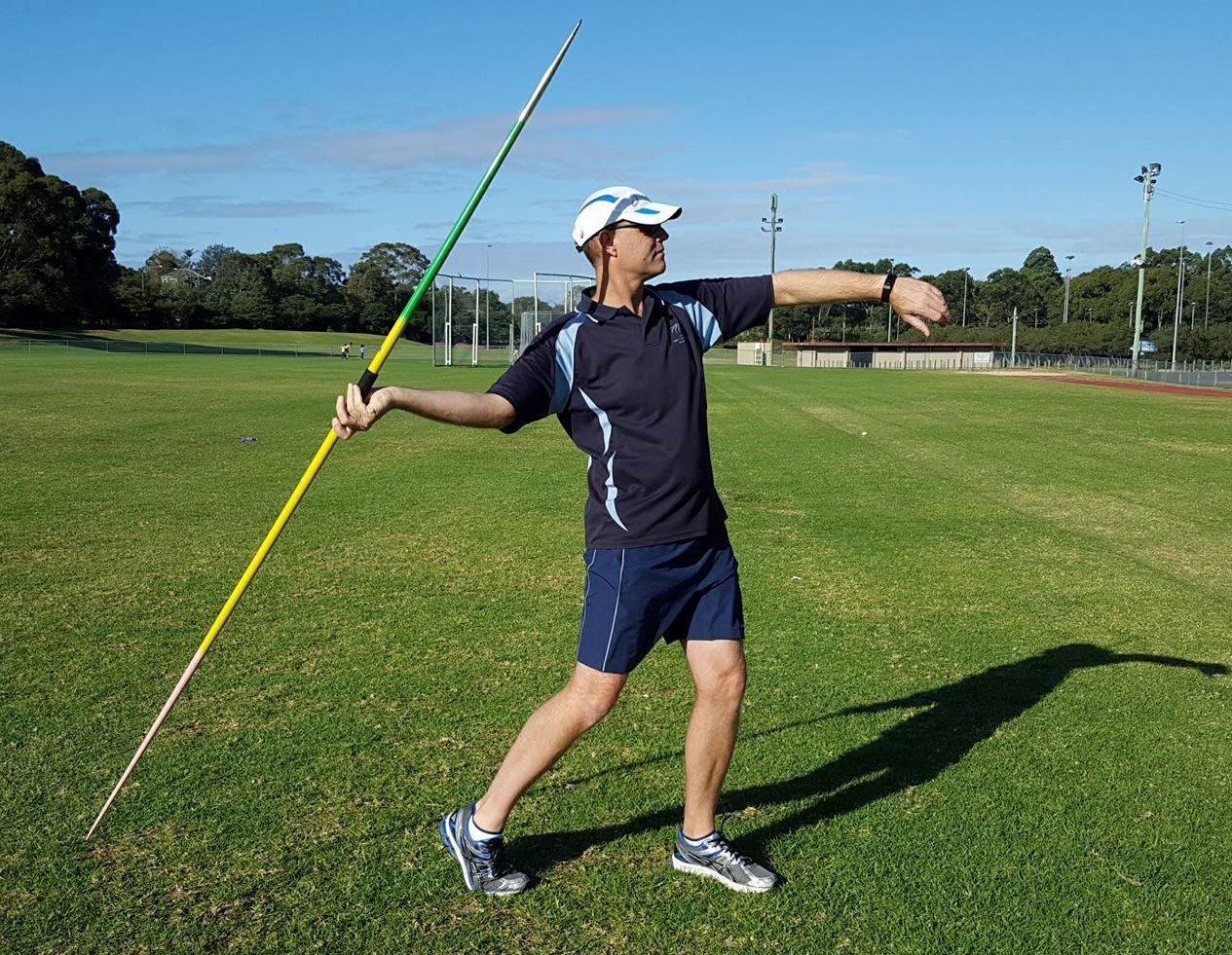
Javelin tip too high
A javelin pointed too far out to the right (for a right-handed thrower) can result in a javelin flying out to the right. It can also lead to the javelin rotating anti-clockwise in flight (in a “helicopter”spin) as the result of the thrower trying to pull it back on course during delivery. If this occurs, you will see the javelin land with its tail pointing out to the right.
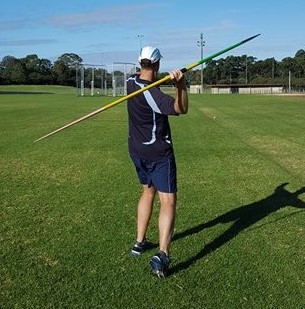
Javelin tip out to the side
Tell young athletes to always keep the javelin pointed in the direction that they want the javelin to go or to “point the javelin at the target”.
3. Hold the javelin away from the body
Rather than keeping the javelin close to their head prior to delivery, many young athletes hold the implement away from their body. This can often be caused by the youngster fearing the point of the javelin or fearing that they will hit themselves with the shaft of the javelin.
Instruct the athletes to keep the the tip of the javelin close to their temple or their eye. If they are wearing a cap you can tell them to hold the point of the javelin on the peak of their cap.
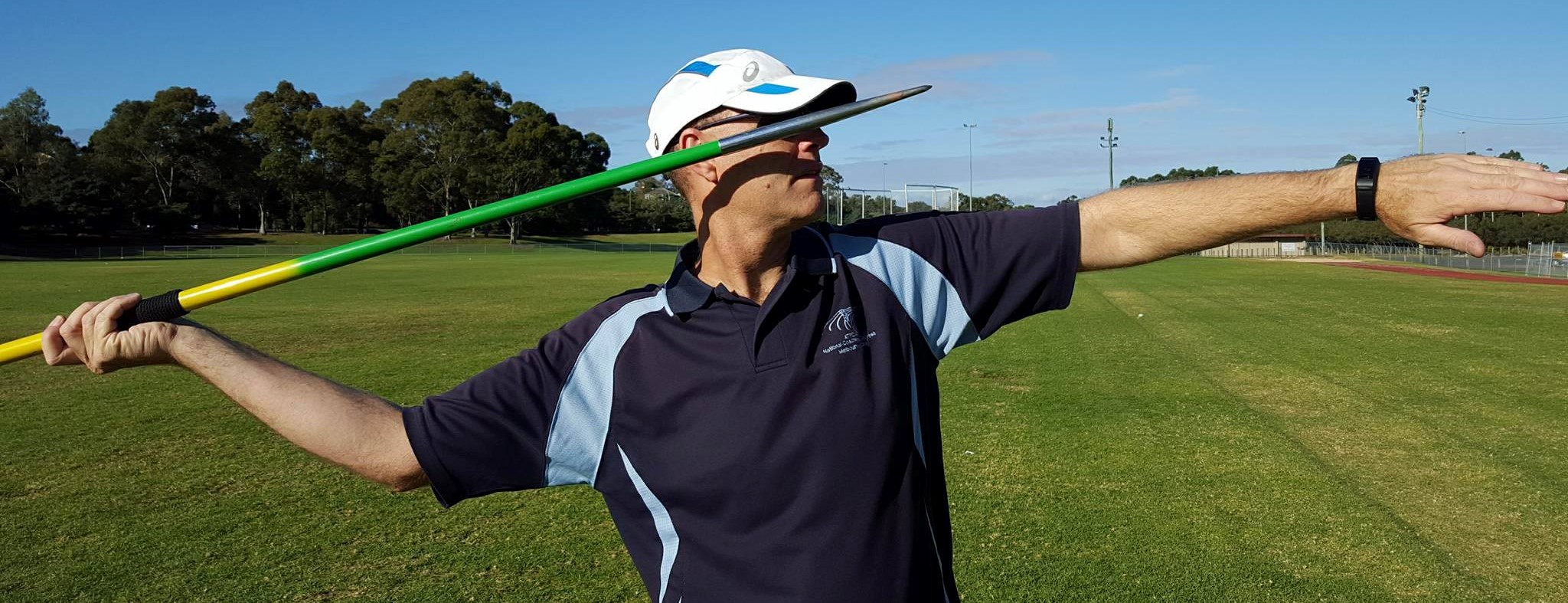
Keep the tip of the javelin close to your eye
4. Round arm throwing action
Rather than delivering the javelin over their shoulder like a tennis serve, it is very common for young athletes to throw with a low, round-arm action.
Besides being an illegal throwing action if the javelin is delivered below the line of the shoulders, youngsters risk either chronic or acute elbow injuries due to the forces placed on the elbow joint by this type of movement.
Another problem with a round-arm action is that it is very hard to keep the javelin aligned to the intended direction of the throw.
I have had great success fixing this problem using this drill, which was inspired by the original Karate Kid movie.
5. Bowl the javelin
It is not uncommon for very young athletes to use an overarm cricket-like “bowling” action when they throw a javelin. In other words, they keep their delivery arm straight as they pull the javelin over their shoulder.
To encourage a more effective throwing action a coach can ensure that the athlete doesn’t lock the elbow of their throwing arm prior to delivery.
Other solutions include:
- Rehearsing the delivery action without the javelin or with alternative implements.
- Rehearsing throws from the “carry” position, where the javelin begins above the shoulder with the arm flexed at the elbow, rather than extended back behind the thrower.
6. Push not pull the javelin
Many young beginners who are not naturally strong with overarm throwing skills will push the javelin from their shoulder, rather than pull it over their shoulder.
Watch out for the young athlete who brings the javelin close to their shoulder in one action, and then pushes out the javelin in a second, separate action. This will appear as a jerky and interrupted movement.
Teach young athletes that the javelin should be pulled over the shoulder in one continuous, smooth action. This often needs to be learnt without a javelin or with other implements e.g. softballs, cricket balls, etc.
7. Lob the javelin
Many young athletes use a really limited follow-through on release of the javelin, resulting in a “lobbing” of the implement. It is not uncommon to see their throwing arm stop well short of of where a good follow-through should finish, with some throwers not extending their arm action much past their shoulder. It will appear as a really hesitant, timid arm action.
I teach young athletes that after releasing the javelin, their hand should “follow” the implement and then continue down and across their body. The javelin needs to be thrown with speed and force.
8. Run and stop
I have countless times seen young athletes take a long run-up in preparation to throw the javelin, before slowing, stopping, then delivering the implement, losing any advantages such a run-up may have given them.
It is better for beginners to throw off a much shorter run-up (e.g. 3-5 steps) and concentrate on building and keeping up their speed on the runway. The speed during the run-up needs to be transferred into the throw.
9. Back crossover
The final three strides prior to throwing a javelin (for a right-handed thrower) consists of a step onto the left foot, then a low “jump” onto the right foot and a final quick step onto the left foot into a throwing stance before pulling the javelin through. The jump into the final stance is often referred to as the “crossover” stride. Part of performing the crossover correctly is that the back foot crosses over in front of the other leg.
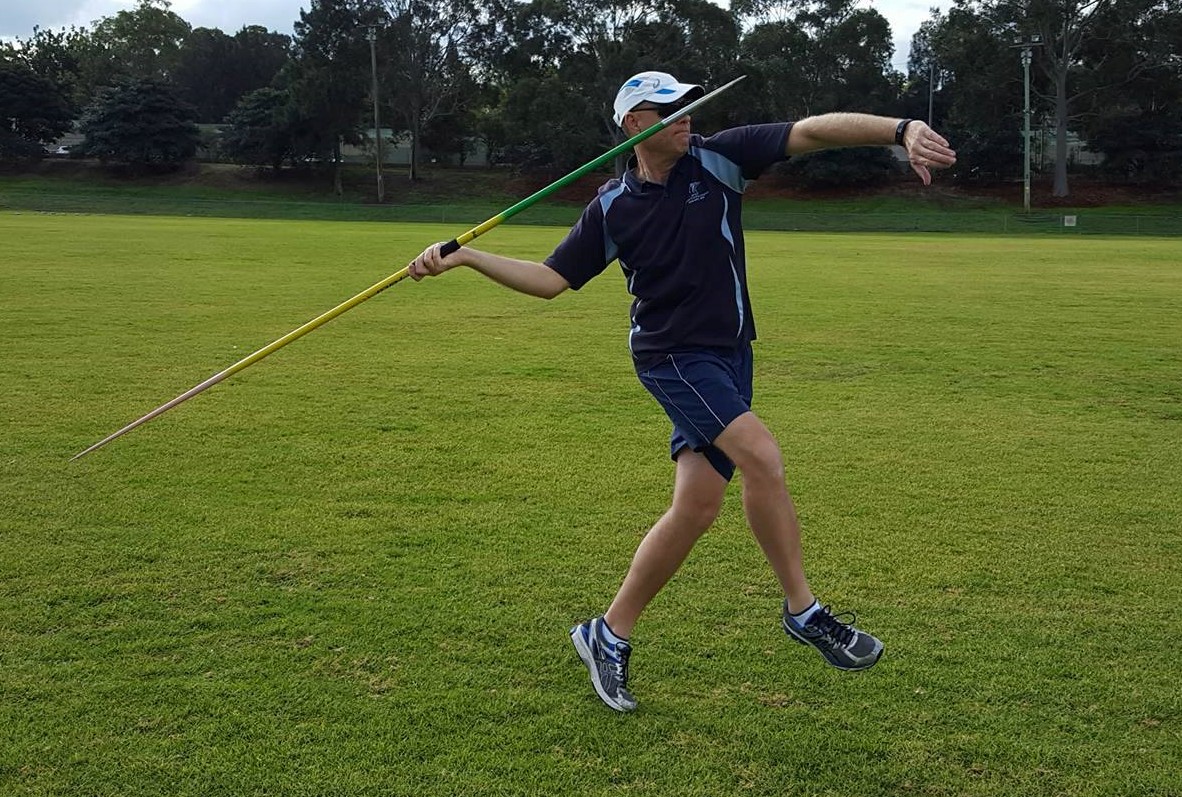
The crossover: “jumping” into the final stride
It is very common to see young athletes incorrectly performing a crossover where their back foot is crossing behind the other leg.

Error – back foot crossing behind the front foot
This can cause a turning of the body and the javelin away from the direction of the throw.
10. Back foot to side on delivery stride
When the foot hits the ground after completing the crossover, it should be pointed at least 45 degrees towards the direction of the throw. This makes it possible to drive the hips and rotate the torso in the direction of the throw.
Many youngsters land with the foot at 90 degrees away from the direction of the throw. This makes it very difficult to drive the hips around which causes a less powerful throwing action and often a misdirected throw – usually towards where the foot is pointed.
What common technical mistakes do you see young athletes make when they throw a javelin?
You can add to the above list by clicking on “Leave a Comment” located on the left sidebar or by scrolling down to the “Leave a Reply” box below. I would also love to hear if you have any solutions other than those noted to any of the common mistakes identified.
Further reading
Coaching Young Athletes E-Book:
How To Introduce Javelin To Young Athletes (plus bonus cheat sheet)
Articles:
A Javelin Drill That Was Inspired by the Karate Kid
How to Control the Point of the Javelin
Books:
Complete Book of Throws (from Amazon)
There are links on this page from which Coaching Young Athletes can earn a small commission. This adds no cost to you but helps to keep this blog sustainable. I really appreciate if you do purchase through my links. Thanks for your support. Darren
We are a participant in the Amazon Services LLC Associates Program, an affiliate advertising program designed to provide a means for us to earn fees by linking to Amazon.com and affiliated sites.
If this post helped you please take a moment to help others by sharing it on social media. If you want to learn more I encourage you to leave questions and comments or contact me directly.
Darren Wensor is a sports development professional, coach educator, specialist coach of young athletes, and founder of the blog coachingyoungathletes.com. Learn more about him here and connect with him on Twitter, Facebook, Linkedin, or via email. Check out Coaching Young Athletes on YouTube, the Coaching Young Athletes podcast, and the Coaching Young Athletes E-Book Series.
